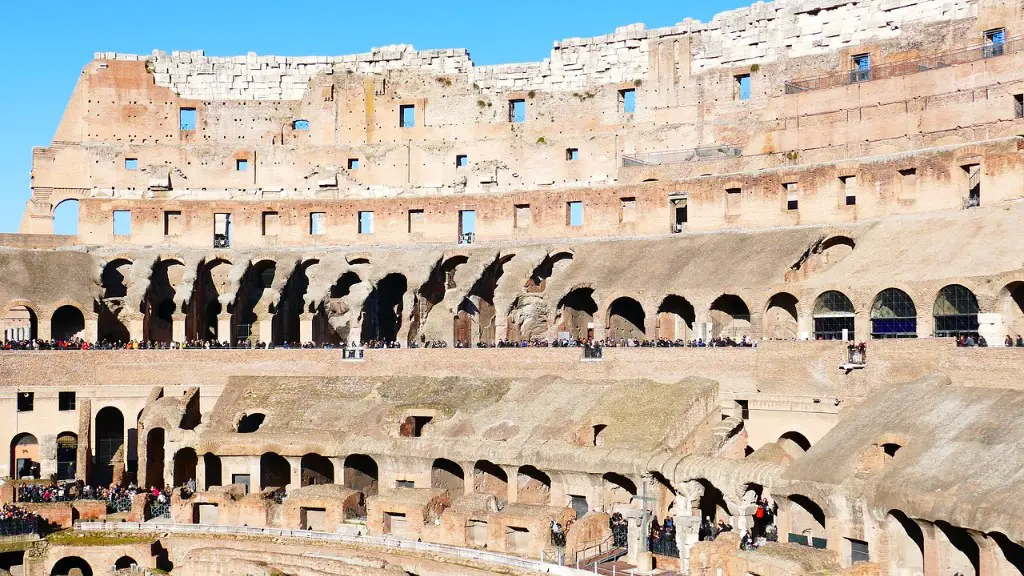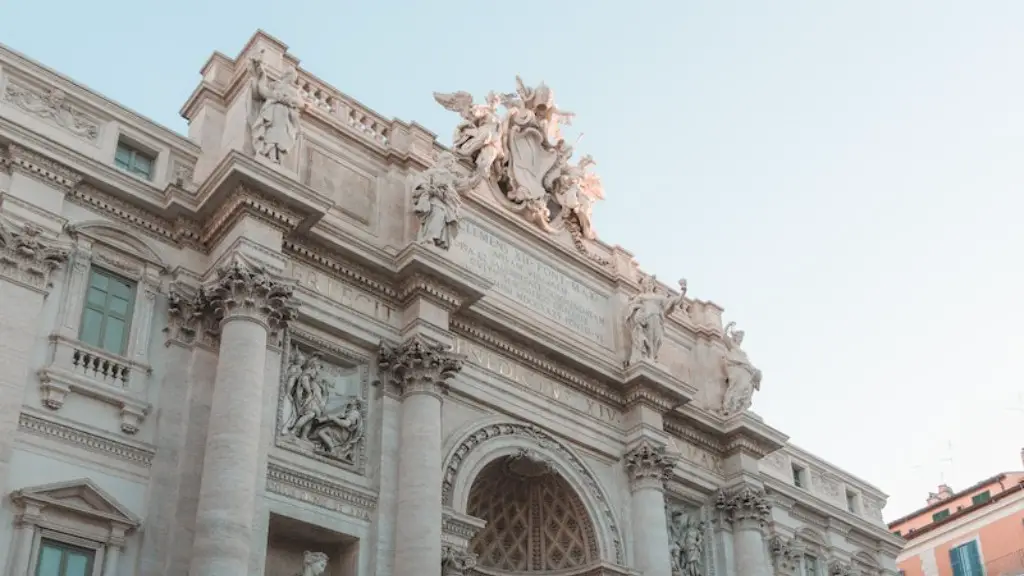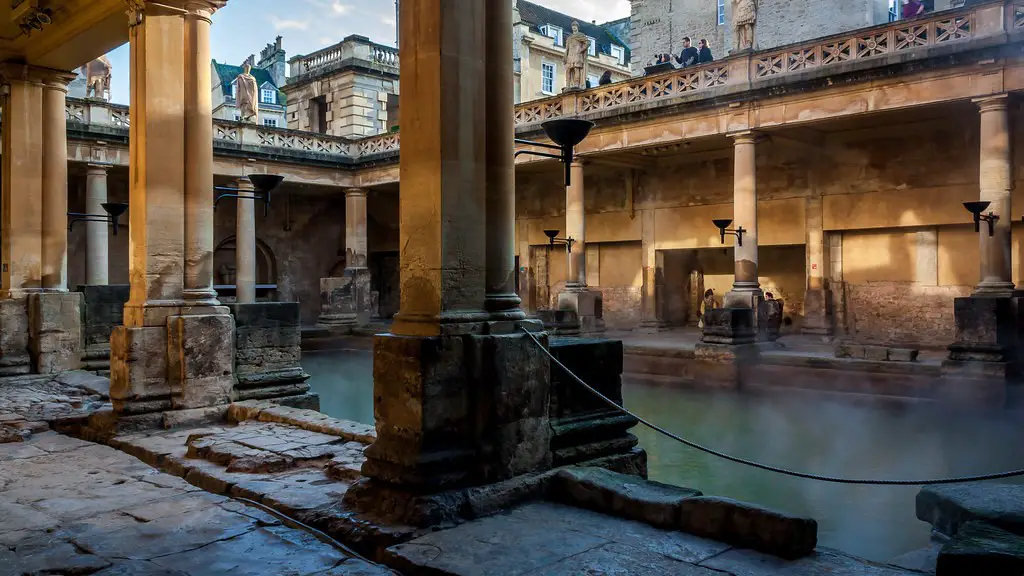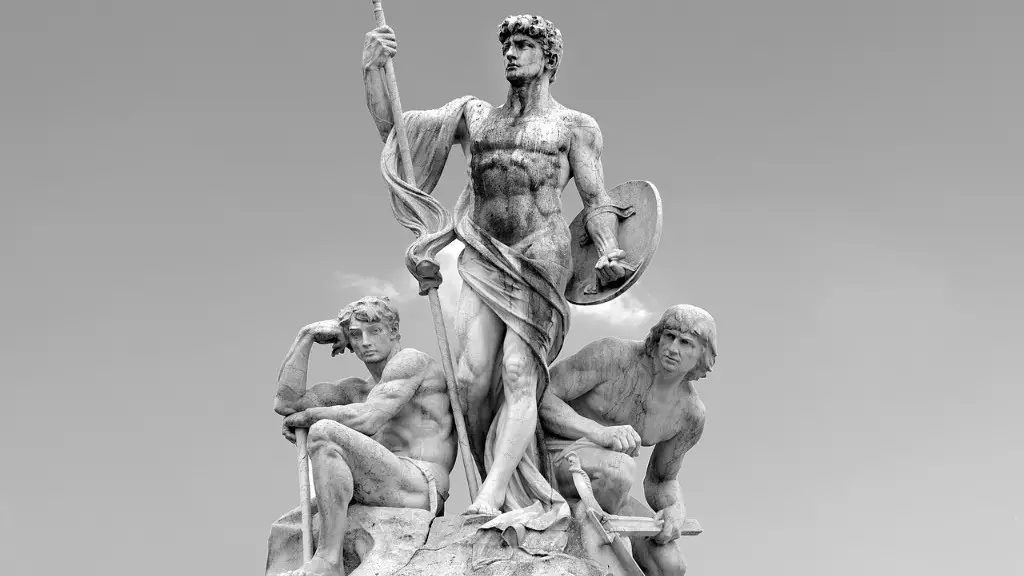Ancient Rome dates back to 753 BC and was founded by Romulus and Remus, the twin sons of Mars, the god of war. This powerful city-state grew from a small village on the Tiber River to become one of the most influential empires in the world. Over the course of centuries, Rome was known for its intricately crafted systems of government, literature, architecture, art, engineering, and military might. Today, it has left its mark on the world as we know it.
The beginnings of Ancient Rome dates back to 753 BC when Romulus and Remus arrived on the banks of the Tiber River through a divine intervention of the gods. This event forms the basis of the legend of the Founding of Rome, which continues to be highly celebrated in modern times. As the city grew, Romulus became its first king and later was replaced by seven other kings ruling in succession. The last of these ended with the rise of the Roman Republic.
The Roman Republic, founded in 509 BC, was seen as a major turning point in Roman history. This new governmental structure changed politics and the way of life in Rome. It introduced key concepts such as representation, the rule of law, popular sovereignty, and the separation of powers. This structuring led the way for the Roman Empire to develop politically, socially, and economically.
Under the leadership of Julius Caesar, the Roman Empire increased in power, unifying much of the Mediterranean world. Caesar is credited with the creation of the Julian calendar, communications networks, and expansions of the Roman legal system, among other accomplishments. He also brought stability to Rome as he successfully defended it against barbarian invaders and banished faction-based civil wars.
The Roman Empire continued to expand and its territories included much of the Mediterranean world, from Britain to Egypt, from Germany to Africa. With these acquisitions came much prosperity, including the spread of its language and culture, which continues to influence the world today. The empire also constructed innovative engineering feats such as roads, aqueducts and architectural marvels, which still reign as iconic works.
The Roman Empire eventually fell in 476 AD, a consequence of its expanding size, changing political climate, and internal strife. With this fall came a sharp decline in the vitality of Rome and the spread of its culture and language, leaving the world to ponder what could have been had the fall not occurred.
Expansion of the Roman Empire
The Roman Empire was able to expand significantly due to its military power. Its armies were well-trained and disciplined, and would often use advanced tactics to defeat their enemies. This allowed the Roman Empire to quickly conquer vast swathes of land, and it soon became one of the most expansive empires in the world.
The Roman Empire also had a strong trading culture, one that connected its many provinces and regions. This allowed it to develop strong connections with distant lands, which in turn provided a greater access to resources. This allowed the Roman Empire to further extend its reach, and its influence spread far beyond what was initially thought possible.
However, while the Roman Empire’s military and trading power enabled it to expand significantly, it also resulted in its eventual downfall. As its territories grew, the theory of Pax Romana began to unravel and its leaders struggled to effectively govern their growing land. This eventually led to its collapse in 476 AD, and its vast regions were then divided into smaller territories ruled by different kingdoms and rulers.
Influence of Ancient Rome on Today’s World
Despite the fall of the Roman Empire, its influence and contributions to the world remain enduring. Its literature, laws, engineering and architectural works, and culture have experienced a renaissance in recent times, with many marvels from the ancient empire still remaining today. Its language, Latin, is still used in scientific, legal and academic settings.
The Roman Empire also formed the foundation of many modern political and legal systems. Its concept of a representative government, separation of powers, and rule of law form the basis of many democracies today. Its customs and traditions are also still found in modern cultures.
The legacy of the Roman Empire is undeniable, and it lives on today through its many contributions to the world. The struggles, conflicts, and triumphs of its citizens and leaders continue to be celebrated in popular culture and will continue to define much of today’s political and legal world.
Roman Architecture
In addition to its political and cultural influence, the Roman Empire also left its mark through its impressive architecture. Many of its structures still stand today, a testament to its engineering and construction capabilities. The Colosseum, for example, is a world-renowned landmark featuring intricate design and construction. The Pantheon, too, is considered a marvel of engineering, featuring one of the world’s first concrete rooftops and maintaining a perfect hemisphere shape for nearly 2000 years. Other iconic structures include the Baths of Caracalla, the Appian Way, and the Trajan Markets, all of which are still considered architectural achievements.
Overall, it is amazing to consider that much of the foundation of today’s world would not exist had it not been for the Roman Empire. Its rich history, defined by both tragedies and triumphs, continue to fascinate and amaze us. It is a testament to our past and a reminder to never forget the history that has brought us to where we are today.
Spread of Latin
When the Roman Empire rose to power, Latin began to spread across its provinces as the official language of communication. Latin eventually became the lingua franca of the world in both politics and education, used in literature, law, science, and religion. Additionally, the Romance languages (Spanish, French, Italian, and Portuguese) all evolved from Latin.
As Latin spread throughout the empire, it also served as a reflection of Roman values and culture. Latin was a language of logic, order, and structure, with an emphasis on punctuation, consistency, and clarity. The language itself served as a reflection of the Roman Empire’s expansive reach, as it was understood far and wide.
Latin eventually began to decline as the Roman Empire fell and other languages, such as German and English, began to rise up. However, its influence can still be seen in many words and phrases that are used in language today. Additionally, its impact on the Romance languages is evident and Latin continues to be studied in academic circles today.
The Legacy of Ancient Rome
The Roman Empire is an impressive reminder of what can be accomplished by a determined and resilient population. Its contributions to the world, from language and law to architecture and engineering, continue to shape much of the world as we know it today. It is a testament to the strength of the human condition and serves as a reminder of the power of civilization.
From its humble beginnings on the Tiber river to its fall in 476 AD, the Roman Empire has left behind an extensive and enduring legacy. Despite the challenges it faced and the tragedies it endured, the accomplishments of its citizens and leaders continue to be celebrated worldwide. This unforgettable and remarkable history provides us with lessons to last a lifetime.




